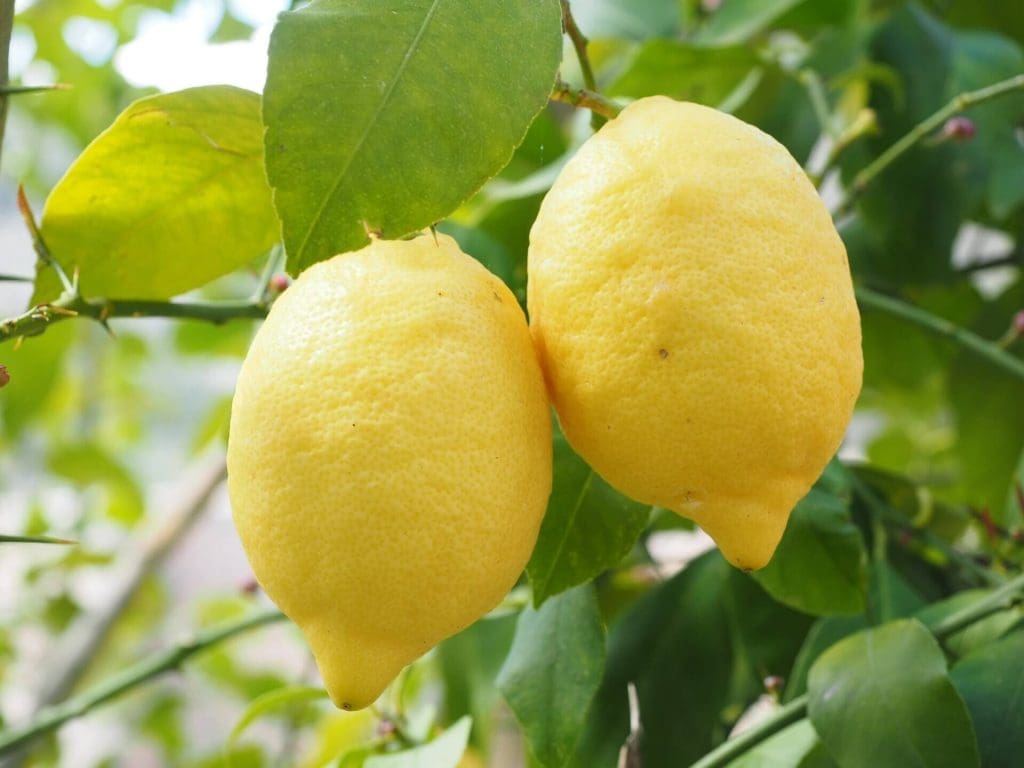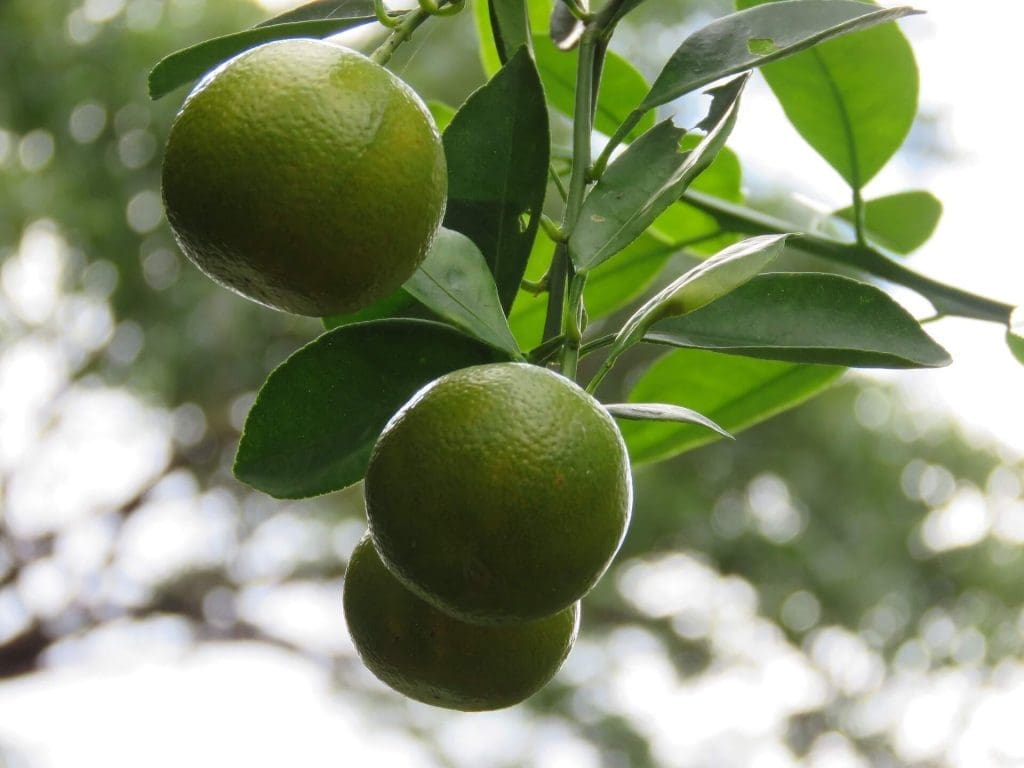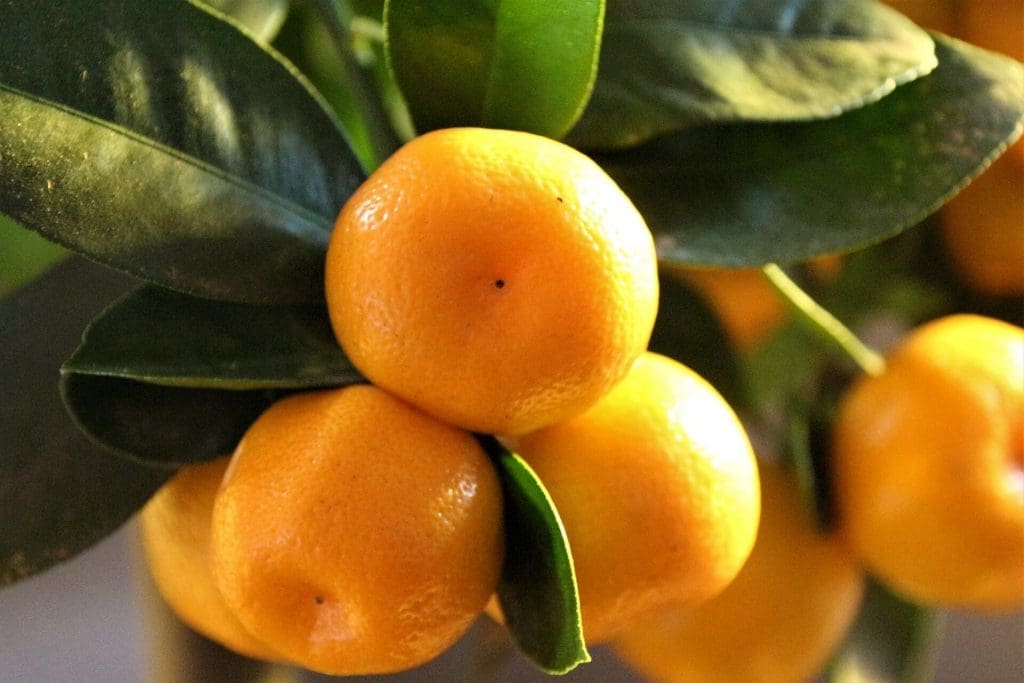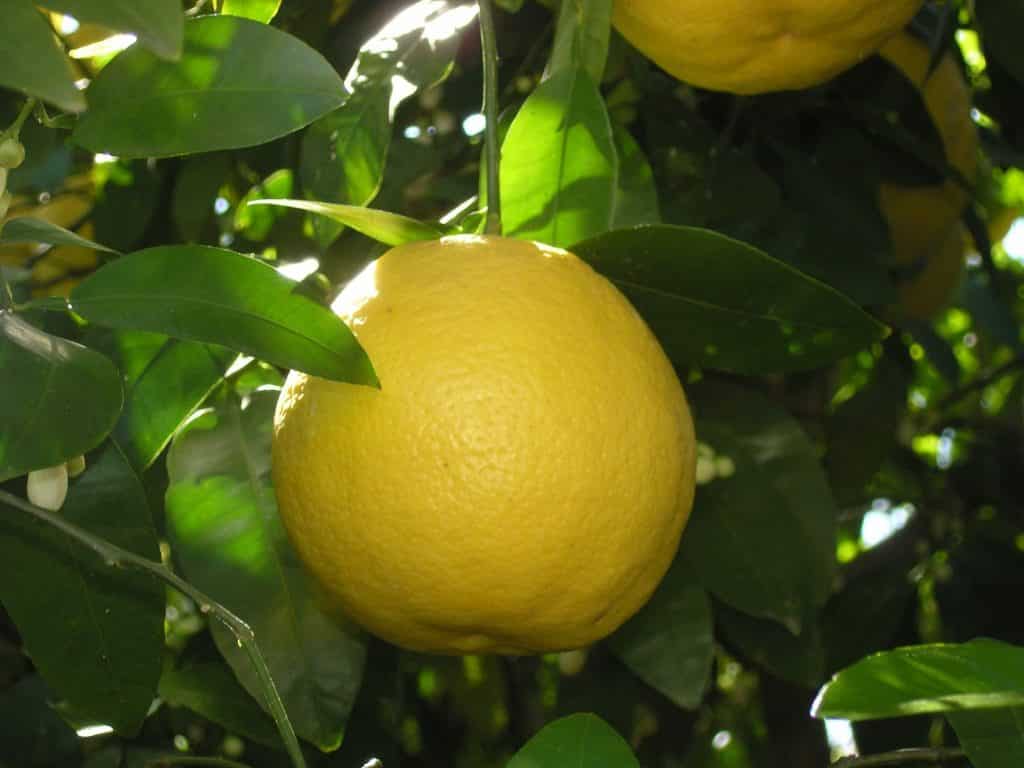If your looking for a complete guide to citrus for Southeast Queensland then this is the article for you. We will go over location, soil prep, fertilising and selecting the right citrus tree for our southeast Queensland climate.
Most citrus are available on dwarf rootstock (Flying dragon rootstock). If you have a small backyard or you wish to grow your trees in pots then dwarf rootstock is best. Otherwise non grafted citrus can be pruned to a smaller size. Non grafted citrus in pots will have to be repotted more often than dwarf citrus.
location for citrus
Citrus need full sun, which means placing them in the sunniest part of your garden or balcony especially during fruiting (winter).
Planting and Soil Preparation for citrus in the ground
Citrus requires free-draining soil. To test your soil’s drainage dig a hole at least 45cm deep, Pour a bucket of water into the hole. If the water takes longer than 20 minutes to drain away you may have a drainage issue. Consider building up the soil in large mounds or planting in pots.
If your soil is well-draining, enrich it with compost or decomposed animal manure. To ensure you do not burn the roots, make sure the material is well broken down prior to planting. Ideally, you should prepare the planting area 4-6 weeks prior.
Planting and soil Preparation for citrus in pots
Dwarf citrus or smaller growing varieties require a pot that holds a minimum of 100 litres of potting mix. A 200-litre container will support non grafted citrus trees. Use a well-draining citrus potting mix.
Fertilising your citrus
All citrus are hungry feeders. Citrus trees in the ground should be fertilised 3 to 4 times each year and 6 times a year for potted citrus. Use a citrus and fruit tree fertiliser and follow the recommended application rate. Avoid fertilising when they are in flower as this can affect flowering. Liquid fertiliser can be applied at any time to boost growth. Watch out for deficiencies as citrus have a high demand for trace elements, but most citrus fertilisers will tend to contain the extra trace elements that are required.
Mulching
Ensure that the mulch does not come in contact with the stems or trunk. The mulch should cover the full extent of the foliage canopy or drip line. Cane mulch, lucerne or compost are best.
Pruning citrus trees
Citrus trees do not require heavy yearly pruning. This can be detrimental to them in a subtropical climate. Citrus requires initial formative pruning to shape the tree in the first few years of growth. Removing the fruit on an immature tree for the first 1 to 2 years will help the tree establish itself. Remove fruit stalks and any twiggy or dead growth. Clean up thin, spindly growth at any time of year. Trim excessively tall growths to reduce tree height. Avoid regular pruning as it can result in a poor harvest or complete absence of fruit
Citrus pest control
Scale, sooty mould and leaf miner
The major pests for citrus are scale insects and sooty mould, Both can be controlled organically by using oil sprays. another pest that oil sprays help control is the citrus leaf miner, as it helps deter the moths from laying eggs on the leaves. The larvae of these moths create silvery trails and distorted leaves. Lemons and mandarin trees are particularly prone to citrus leaf miner. Citrus leaf miner moth on smaller trees can be controlled by squeezing the larvae on the affected leaves with your fingers.
Citrus gall wasp
Citrus gall wasps attack the young stems of citrus trees. The wasp lays its eggs within the stem. The stems swell up from the larvae feeding on the inside of the stem. To control this pest, prune off any swollen stems prior to the adult wasp emerging at the end of July. Lumps on older stems do not need to be removed as the was has already emerged.
Fruit fly
Lemons, mandarins, and thin-skinned grapefruit are particularly susceptible, but fruit fly can sting all citrus. Set out fruit fly bait traps around trees (like Cera Trap/Wild May). If fruit flies are particularly bad in your area, consider using fruit fly bags or even paper bags to protect the fruit. Pick up and destroy all infected fruit to reduce larvae pupating in the soil around trees. Mulch heavy around trees. To dispose of any infected fruit, place the fruit in a container and pour boiling water over the fruit until completely covered. Leave to cool. Pour the water into the garden and compost or bury the fruit.
Stink bugs
Stink bugs feed on the new growth of citrus. Young stick bugs are green, gradually changing colour to orange and then mature to large, hard-shelled black bugs. Regular use of an oil spray should keep them under control. If adult insects are found, apply Neem spray directly on the insect but not the whole tree. Optionally suck them off with an old vacuum cleaner. Take care to avoid contact as stink bugs secrete an acrid substance that can burn the skin and cause eye damage.
Best citrus variaties for Southeast Queensland
Orange
- ‘Valencia’ – Great eating or juicing, grafted orange.
- ‘Seedless Valencia’ – Seedless Grafted variety of Valencia that is slightly later fruiting.
- ‘Joppa’ – Commercial juicing orange, that bears fruit after the Valencia crops have finished.
- ‘Navel’ – Traditional eating orange. Lane’s Late Navel is popular. Very short season.
- ‘Arnold Blood Orange’ – Red fleshed orange primarily used for juicing.
Helpful Tip: If you have room, plant ‘Joppa’ and ‘Seedless Valencia for six months of fruiting in Southeast Queensland.

Lemon
- ‘Eureka’ – Grows tall (4-6m high), easily pruned to desired high or available on dwarf rootstock. Winter bearing, but produces some fruit almost year-round in SE QLD.
- ‘Lemon Heaven’ is a seedless variety of Eureka.
- ‘Meyer’ – Grafted variety around 2.5m high and suitable for pots or gardens, but has thin skin and is prone to fruit fly.
- ‘Lots of Lemons’ and ‘Lemonicious’ – Cultivar of ‘Meyer’ grown from cutting. Great for pots, prone to fruit fly.
- ‘Lisbon’ – Grows tall (4-6m high). Fruit stores well for long periods. Thorny, winter fruiting.
- ‘Fino’ – Vigorous grower (4-6m high), thorny, seedless, smooth-skinned, mostly winter fruiting.
- ‘Villa Franca’ – Grows tall (4-6m high), thorny, winter bearing with some summer and autumn fruit.
- ‘Bush’ – Seed grown with thick skin and lots of seeds but incredibly tough and easy care. Takes 4-7 years to fruit.

Lime
- Native/Finger Limes – Grafted varieties are recommended. Fruit is produced from late summer ripening in winter. Proven cultivars are `Rainforest Pearl’ and ‘Red Centre’ but others are available.
- ‘Tahitian’ – Ideal for cooking or drinks. Grafting on rough lemon rootstock will produces a large tree and early crop, while Poncirus trifoliate rootstock gives a smaller, late harvest.
- ‘West Indian Lime’ (Mexican or Key Lime) – Better suited to the tropics, but can be grown in SE Queensland. Grafted is best here. ‘Sublime’ is a cutting grown (non-grafted) form of West Indian lime best grown in a pot.

Mandarin
Helpful tip: Consider planting an early, mid and late-season variety for an extended harvest.
Varieties in bold are recommended selections for Brisbane
Early season varieties include: ‘Clementine’, ‘Daisy’, ‘Imperial’, ‘Okitsu Wase’, ‘Satsuma’
Mid season varieties include: ‘Dancy’, ‘Hickson’
Late season varieties include: ‘Afourer’, ‘Avana Tardivo’, ‘Ellendale’, ‘Honey Murcott’

Grapefruit
- ‘Ruby Red’ or ‘Red Blush’ – Red fleshed breakfast-sized grapefruit. Thicker skinned meaning better pest resistant’s, than yellow skinned varieties.
- ‘Flame’ – A popular breakfast-sized grapefruit with red flesh. Thicker skinned (meaning pest resistant) and less tart than yellow skinned varieties. fewer seeds than Ruby or Red Blush.
- ‘Marsh Seedless’ – Traditional, thin yellow-skinned variety with very large fruit. Subject to fruit fly than red fleshed varieties.
- ‘Thompson Seedless’ – Traditional, thin yellow-skinned variety. Subject to fruit fly slightly more than red fleshed varieties.
Helpful tip: Red fleshed grapefruit may not colour to quite the same extent in South East Queensland as in other climates.

